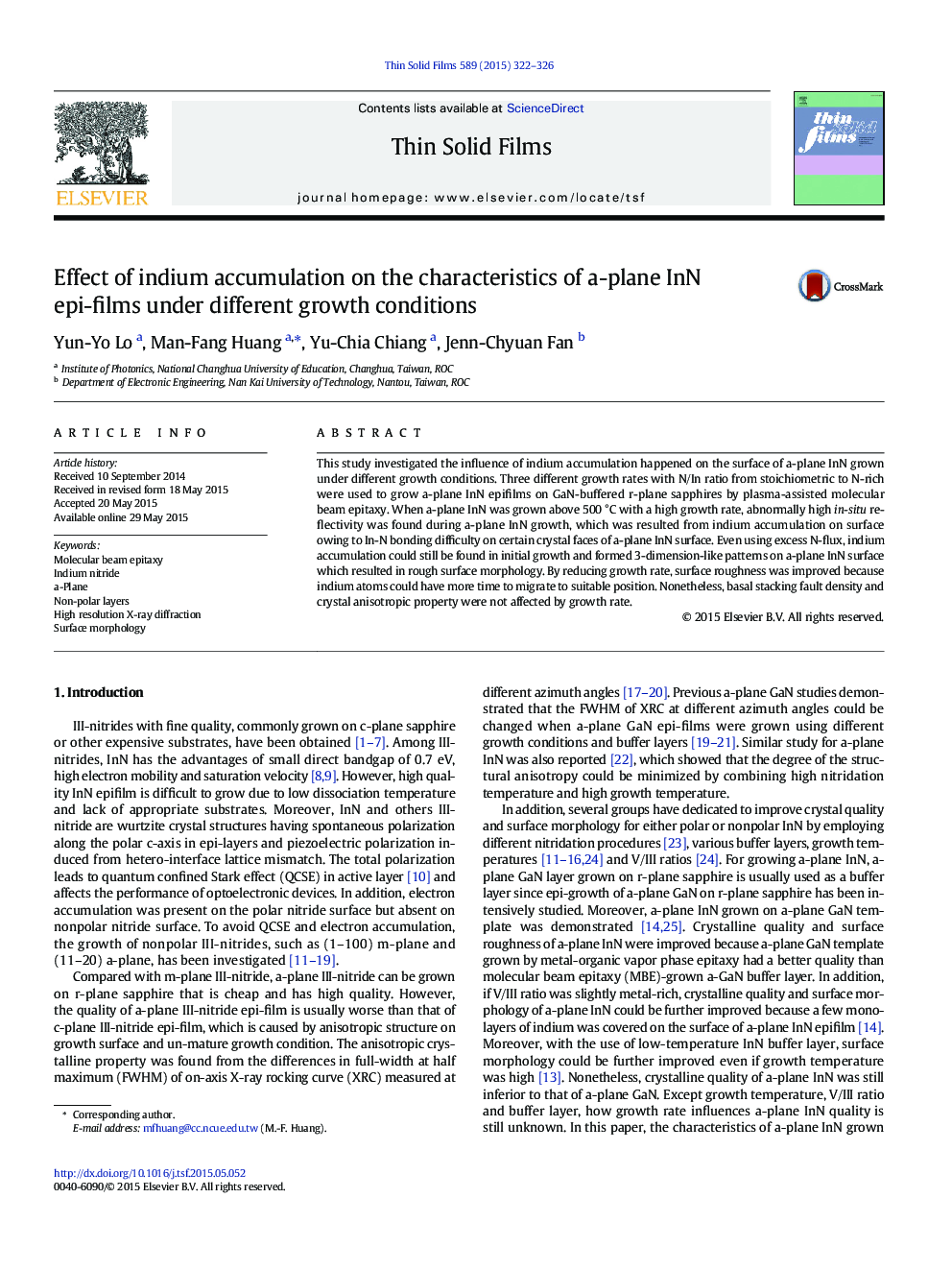| Article ID | Journal | Published Year | Pages | File Type |
|---|---|---|---|---|
| 1664614 | Thin Solid Films | 2015 | 5 Pages |
•High growth temperature could cause indium accumulation on a-plane InN surface.•Indium accumulation on a-plane InN surface causes rough surface.•Low growth rate improves surface morphology but not crystal quality.
This study investigated the influence of indium accumulation happened on the surface of a-plane InN grown under different growth conditions. Three different growth rates with N/In ratio from stoichiometric to N-rich were used to grow a-plane InN epifilms on GaN-buffered r-plane sapphires by plasma-assisted molecular beam epitaxy. When a-plane InN was grown above 500 °C with a high growth rate, abnormally high in-situ reflectivity was found during a-plane InN growth, which was resulted from indium accumulation on surface owing to In-N bonding difficulty on certain crystal faces of a-plane InN surface. Even using excess N-flux, indium accumulation could still be found in initial growth and formed 3-dimension-like patterns on a-plane InN surface which resulted in rough surface morphology. By reducing growth rate, surface roughness was improved because indium atoms could have more time to migrate to suitable position. Nonetheless, basal stacking fault density and crystal anisotropic property were not affected by growth rate.
